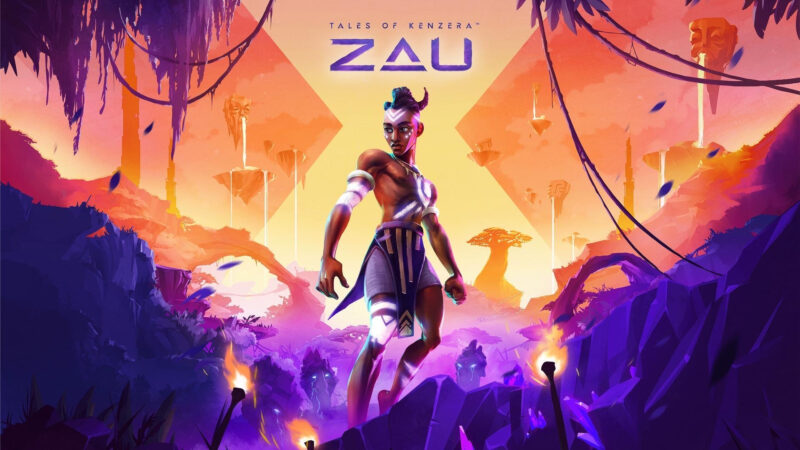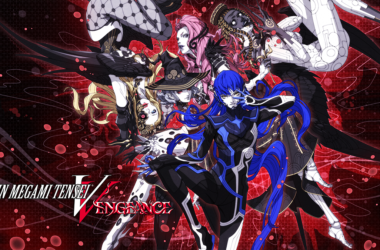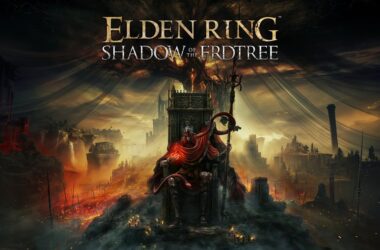“Every story begins at the end of another.” This phrase is mentioned throughout Tales of Kenzera: ZAU, as it deals with the emotional toll we experience when losing someone we love. Tales of Kenzera: ZAU embraces the hardship people face when struggling to comprehend tragedy and heartache, as we all must strive to continue our own story in the face of this emotional adversity. We all experience loss at some point in our lives, and Tales of Kenzera: ZAU hopes to provide players with the strength to carry on when all hope seems lost.
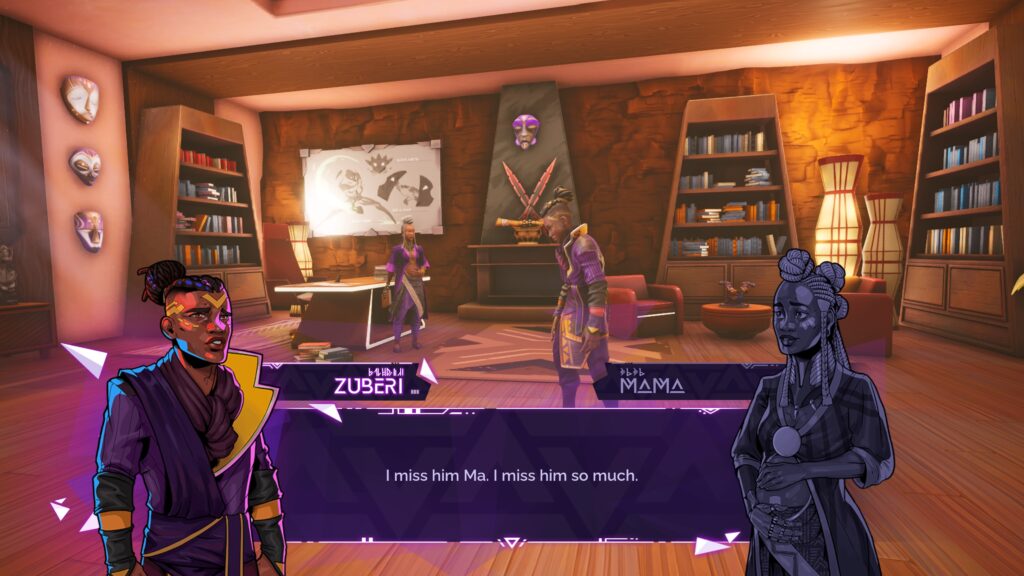
Tales of Kenzera: ZAU introduces us to Zuberi, a young man who is struggling with the recent loss of his father. Zuberi’s mother gifts him with a book that his father had been writing before his death. Zuberi’s father wrote the book to try and help his son deal with his death, as the story echoes Zuberi’s internal struggle. This story is important, as players will spend the majority of the game playing out the narrative contained within the book. As Zuberi reads the story, players take control of Zau, a young shaman from the lands of Kenzera who has also recently lost his Baba (father). Zau, mirroring Zuberi’s current emotional state, is also battling with his own grief surrounding his Baba’s passing, so much so that he summons Kalunga, the God of Death, to bargain a deal. Zau offers to hunt down the three great spirits, all of which have eluded the God of Death, and in exchange for his efforts, Zau requests that his Baba be returned to him.

This story focuses on the tragedy of loss, a powerful and emotional concept, delivering a touching story with a lot of heart. Zau is overcome by grief, anger, and frustration from his Baba’s passing, and we follow his journey as he learns to embrace these feelings, harnessing them to become a stronger person over the 8–10-hour journey. Tales of Kenzera’s narrative is the strongest element of the experience, as it tells a beautiful story of finding the courage to carry on. While the narrative follows some predictable story beats, the mature delivery is relatable and more powerful because of it. The fantastic writing found within Tales of Kenzera is uplifted by the incredible voice cast and the performances each individual delivers. The standout performer is Abubakar Salim (Bayek, Assassin’s Creed: Origins), who plays the roles of Zuberi and Zau, respectively. His performances make the emotionally charged story resonate at a higher level, improving every emotional moment and genuinely making the transformative story of loss truly unforgettable.
Tales of Kenzera has been inspired by Bantu tales, and this rich and unique lore radiates throughout the adventure. As someone who loves exploring the lore and spiritual tales from different cultures, Tales of Kenzera allowed me to embrace and appreciate the stories that inspired its people. Bantu lore is found throughout the main story, with the in-game Codex providing additional details to any player who wants to invest in this mythological setting.
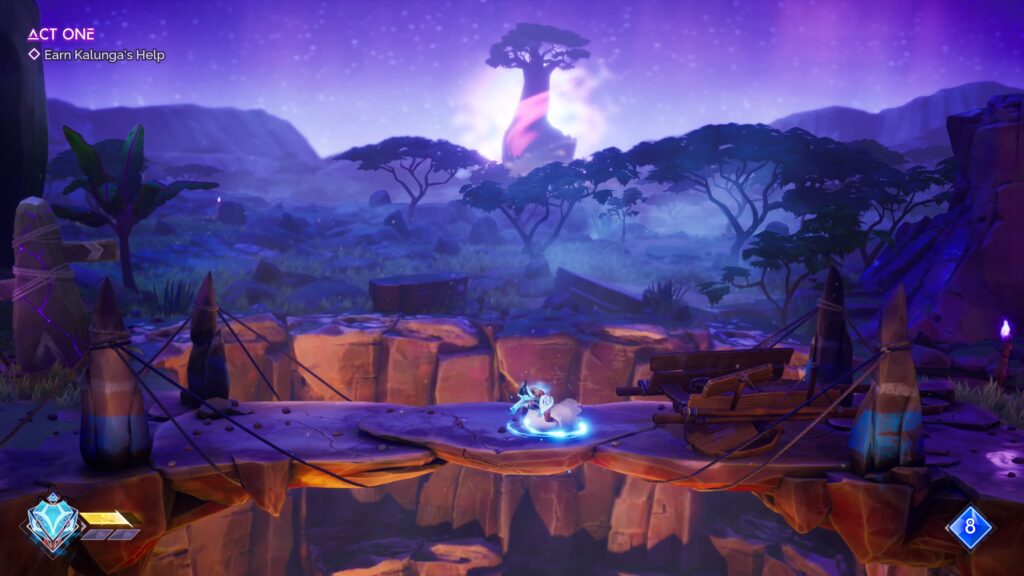
Tales of Kenzera has two main gameplay elements – combat and platforming. Zau wields the cosmic powers of the Moon and Sun masks, which he inherited from his Baba. The Moon mask is great for crowd control and ranged combat with its rapid laser-like weapons, and also has the ability to freeze water making it traversable. On the other hand, the Sun mask is about close-range combat and high-levels of damage, with the ability to throw high-damage projectiles at enemies. The ability to effectively switch between both masks will become critical to your success in combat and traversal.
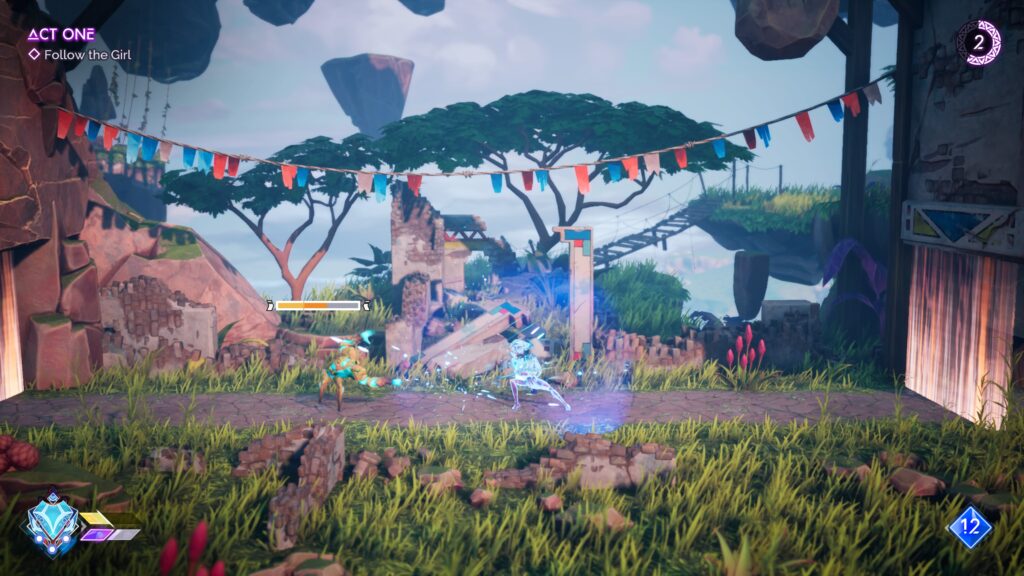
Early combat allows players the chance to comprehend the mask-switching mechanics with basic encounters, but upon reaching the halfway point of the game, combat becomes more challenging as enemies will possess regenerative shields that require specific masks to deal damage. The increased challenge comes more from dealing with the regenerative shields rather than increased enemy difficulty, as shields regenerate fairly quickly and require high levels of consistent damage to be removed. Shields will either be blue or orange, which informs the player whether the Moon or Sun mask should be used against these shielded foes. While this concept makes sense, in practice, it can cause confusion. This is due to the fact that Zau will also be shrouded in either blue or orange light, making late-game battles with additional enemies on screen (all of which are shrouded in coloured shields) challenging for the wrong reasons. I found myself dying many times simply due to the fact I lost track of Zau within the sea of coloured enemies, with the particle effects from attacks and the zoomed-out camera doing little to mitigate the issue.
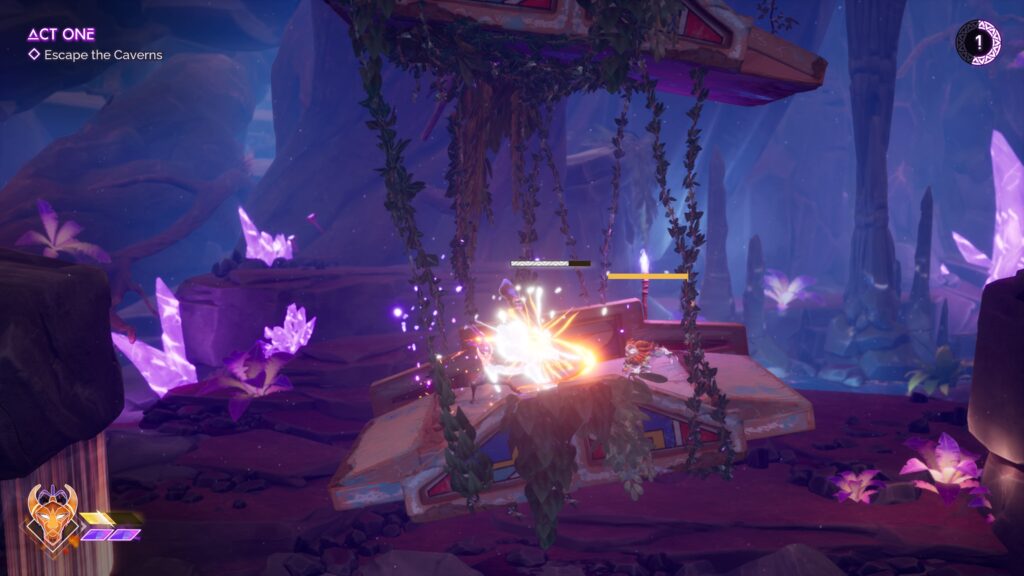
I also found the mask switching to be inconsistent during battles, meaning many wasted efforts trying to deal damage to specific enemies. Tales of Kenzera wants players to enjoy a combat system reminiscent of Devil May Cry, but it lacks the rapid responsiveness that the series provides. Overall, combat is fine, but the issues mentioned above become more prevalent as the adventure continued.
The other gameplay element of Tales of Kenzera is platforming. When running through the environments, quickly vaulting through the air with Zau’s double-jump ability, I felt strong parallels to the Ori series; one of the best platforming adventures of recent memory. When Tales of Kenzera lets the player explore the world without interruption, it is a fantastic experience, with the wonderful 2.5D visuals and a unique soundtrack helping to emphasise the beauty on screen. It provides players with the usual platforming abilities, like the aforementioned double jump and grappling hook, while also giving players the ability to construct and deconstruct items as they traverse, a mechanic I wish was utilised more.
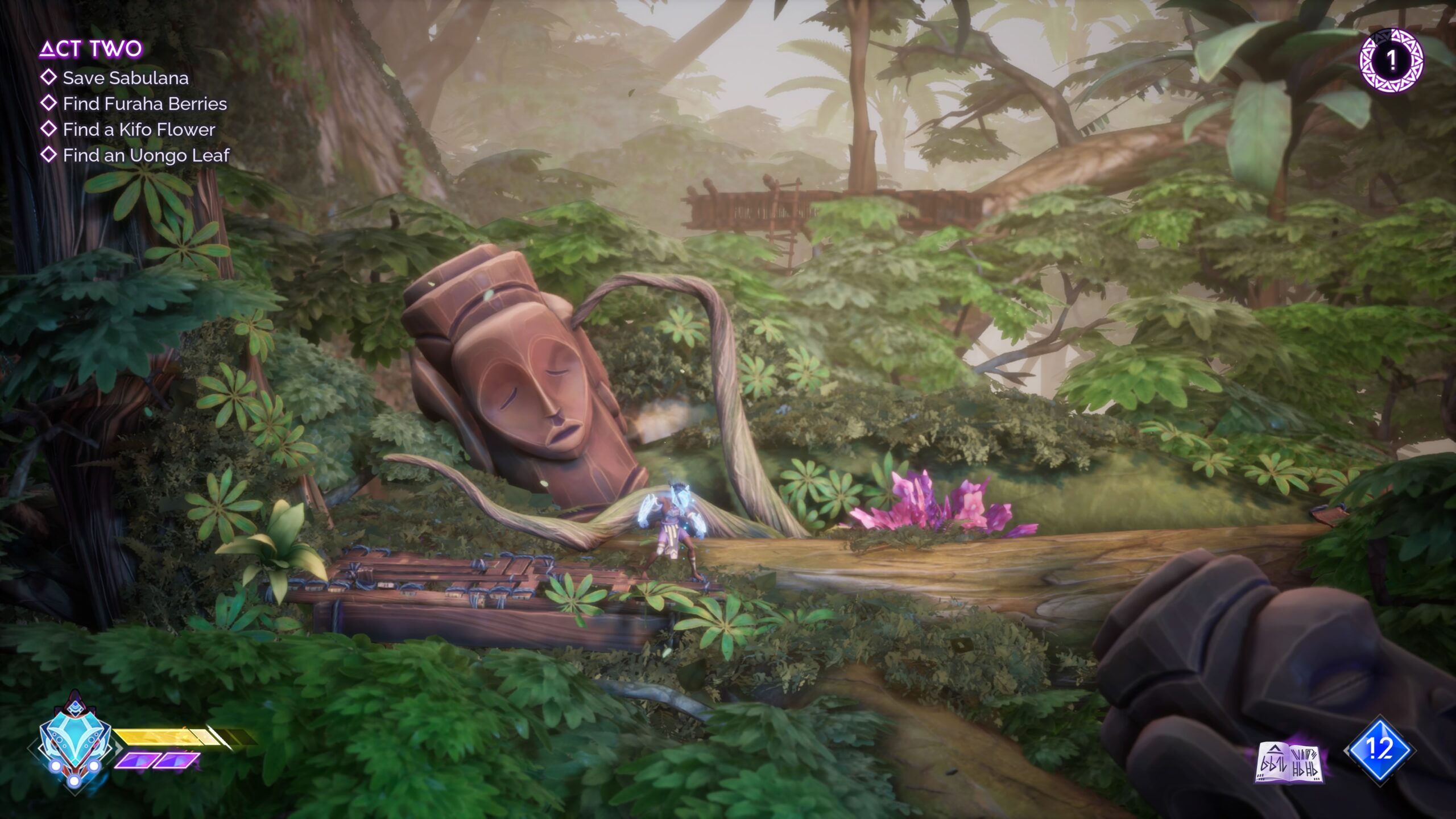
However, there is a fundamental issue that hinders the free-flowing and fast-paced traversal that Tales of Kenzera tries to offer – the camera. While the camera doesn’t offer a great view during combat encounters, it becomes more of an annoyance during platforming sections. The camera frequently struggles to keep up with the player, especially when your character is quickly zipping through the environment, which means untimely deaths frequently occur as instant-death obstacles are out of view. This also occurs during the more difficult platforming sections of the game, as the camera seems to deliberately obstruct instant-death obstacles. I am unsure if this was intentional or not, as trial and error is a vital element of platformers like Tales of Kenzera, but that didn’t stop these deaths from feeling cheap and unearned.
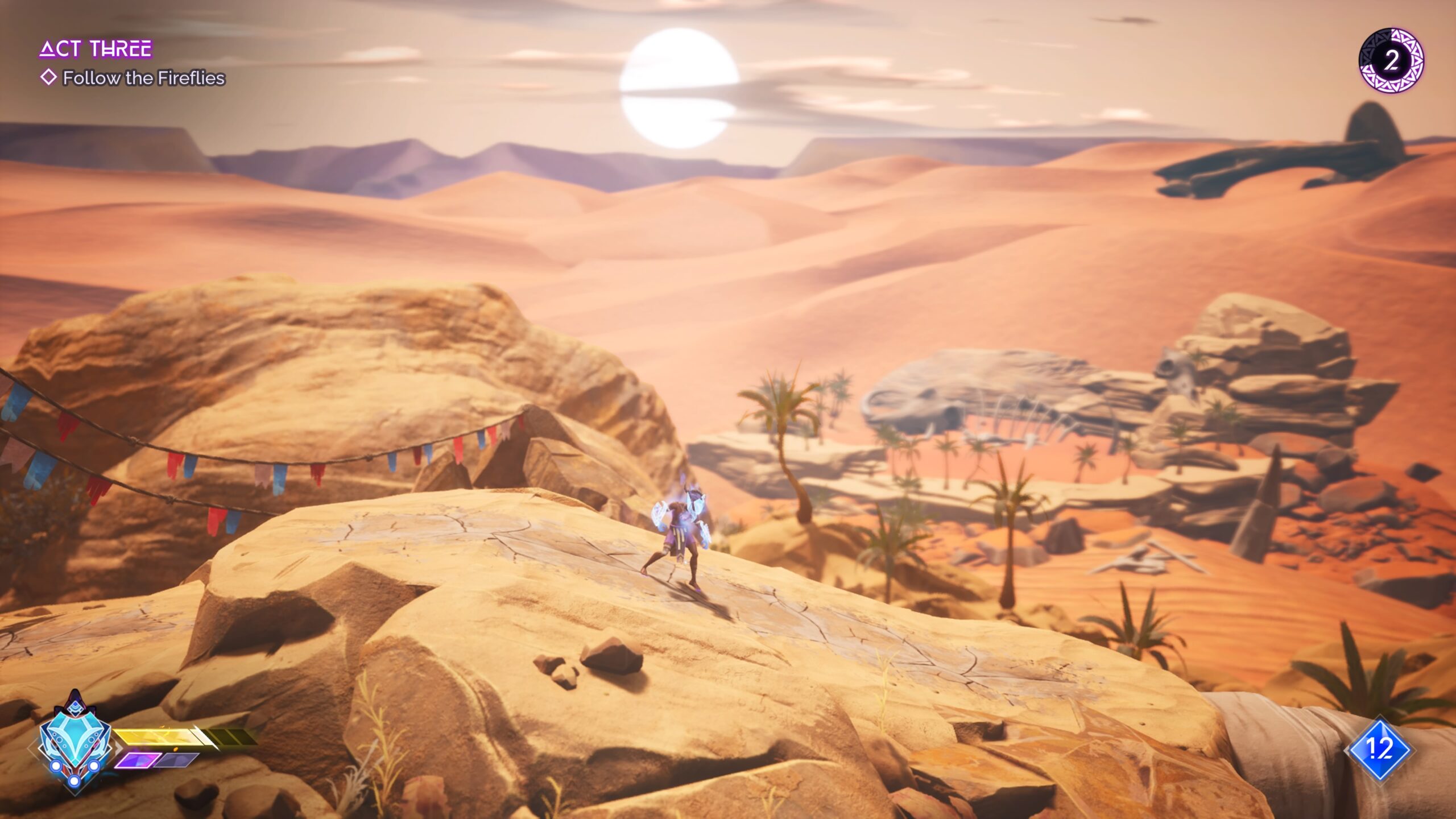
Tales of Kenzera also includes a handful of boss encounters, all of which have their own unique mechanics to successfully defeat. The first boss encounter was the highlight of Tales of Kenzera’s combat experience. It encouraged me to learn enemy patterns and react quickly to enemy attacks while also providing incredible music and gorgeous particle effects. It was an intense, thrilling, and brilliant encounter, which left me excited for the other boss battles. However, the second boss moves away from the combat-focused encounter of the first boss battle to instead focus on an escape sequence, similar to those found in the Ori series.
The camera issues and cheap deaths I mentioned previously also hindered my ability to enjoy these chase sequences, especially since chase sequence checkpoints are few and far between. Platformers need to provide the player with the precise and responsive tools to succeed, with failure tied to player skill rather than mechanical issues. I found myself dying almost a dozen times during the second boss chase sequence, and I had no idea why. This was because the camera wasn’t keeping up with the pace of the chase, and it wasn’t until I slowed down (actively conflicting with the aspects of the chase encounter) that I finally noticed the obstructed environmental hazard causing my death. The combat-focused boss confrontations in Tales of Kenzera are the most thrilling combat encounters in the game, but the platform-focused sections of boss battles only emphasise the camera issues.
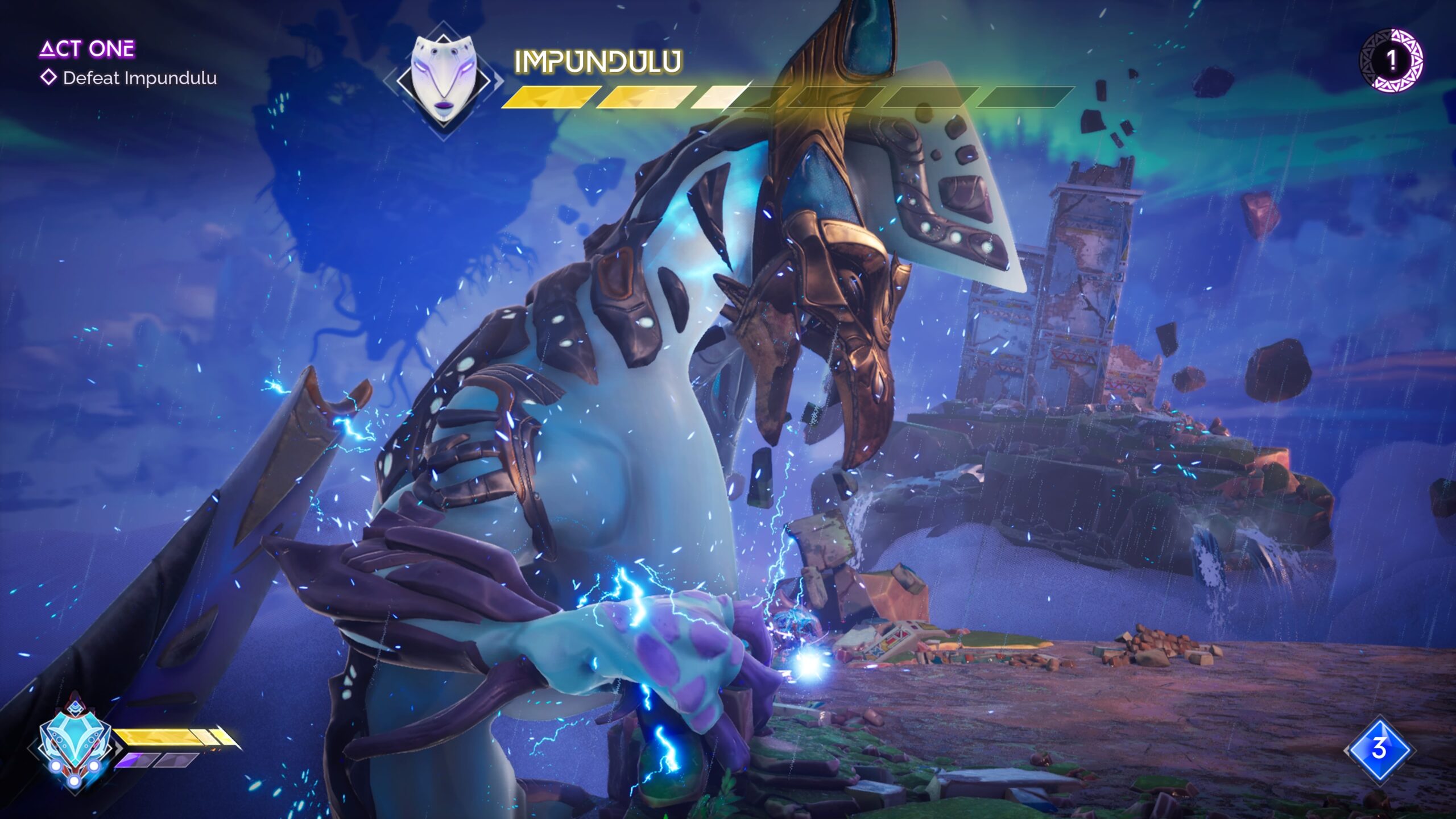
READ: Final Fantasy XVI: The Rising Tide DLC Review
As a Metroidvania, some collectibles in Tales of Kenzera require certain abilities to acquire. While other Metroidvanias tend to leave areas of the map dark/undiscovered until a player makes their way there, Tales of Kenzera uncovers each area of the map as soon as the player arrives. This makes it incredibly difficult to know where you have already been, and with no ability to see unknown collectables on the map, the post-game collectible cleanup felt like trying to find a needle in a haystack of needles.
Tales of Kenzera features a fantastic soundtrack, with modern synth beats combined with inspiration from traditional African music. This combination is unique and utterly brilliant. The soundtrack helps heighten the tension during combat and boss encounters, with orchestral aspects scattered throughout the music to create a grandiose sound. This musical fusion allows Tales of Kenzera to feel thematically distinct, especially when compared to other genre counterparts.
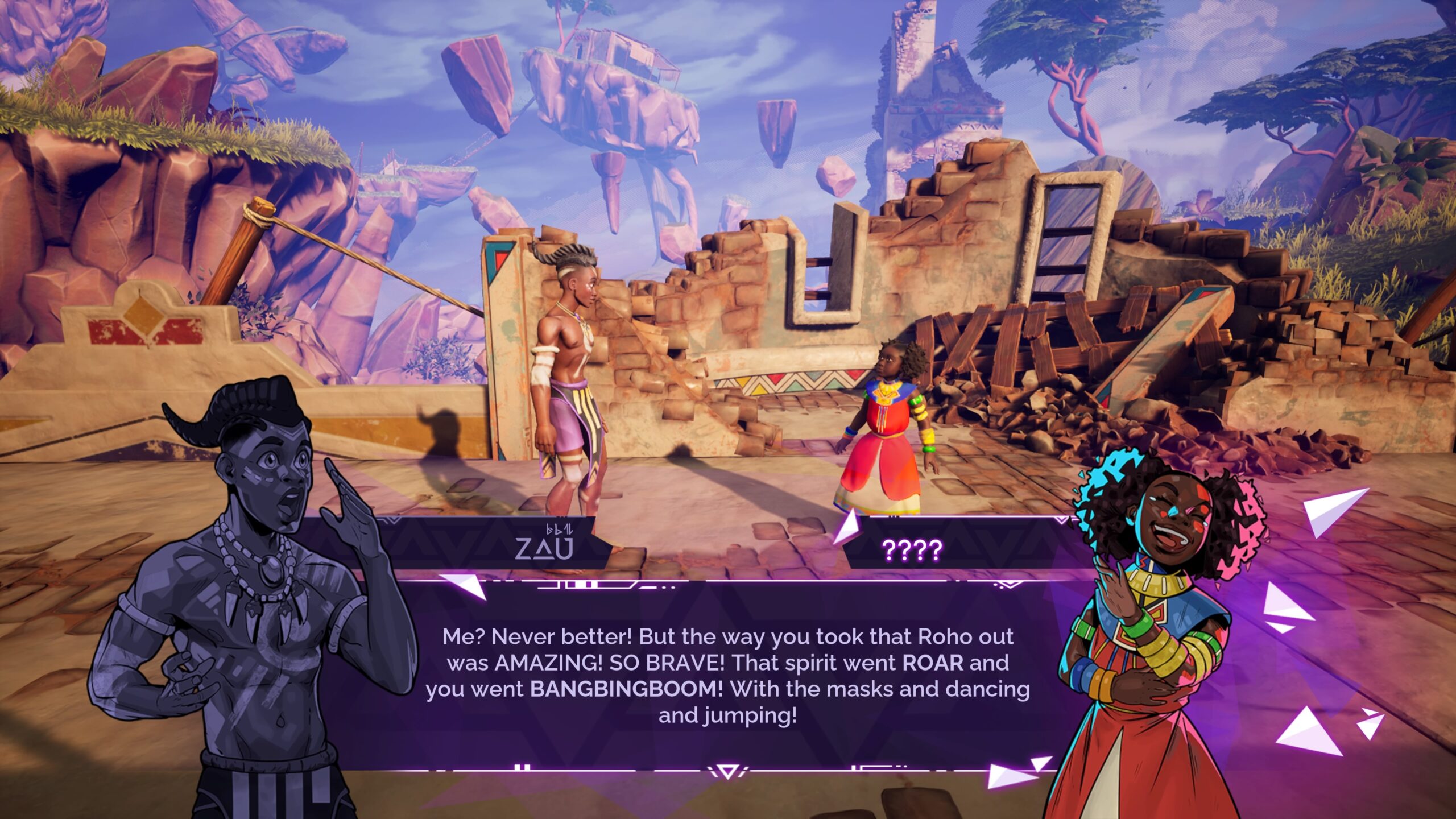
At its core, Tales of Kenzera is a 2.5D platformer, with detailed environments creating a dioramic experience. The character models are 3D but are kept on the 2D plane. The environments are picturesque, with intricately detailed backgrounds that make the world feel alive. I do wish there were more colourful environments to explore, as players will visit many bland grey and brown caves, a corrupt forest, and a desolate desert. However, the lack of vibrant colours seems to be intentional, as developer Surgent Studios mentioned that the environment and colours used throughout the experience were used to help convey emotion. While that might be the case, Tales of Kenzera looks best when it embraces colour and goes wild with environmental creativity.
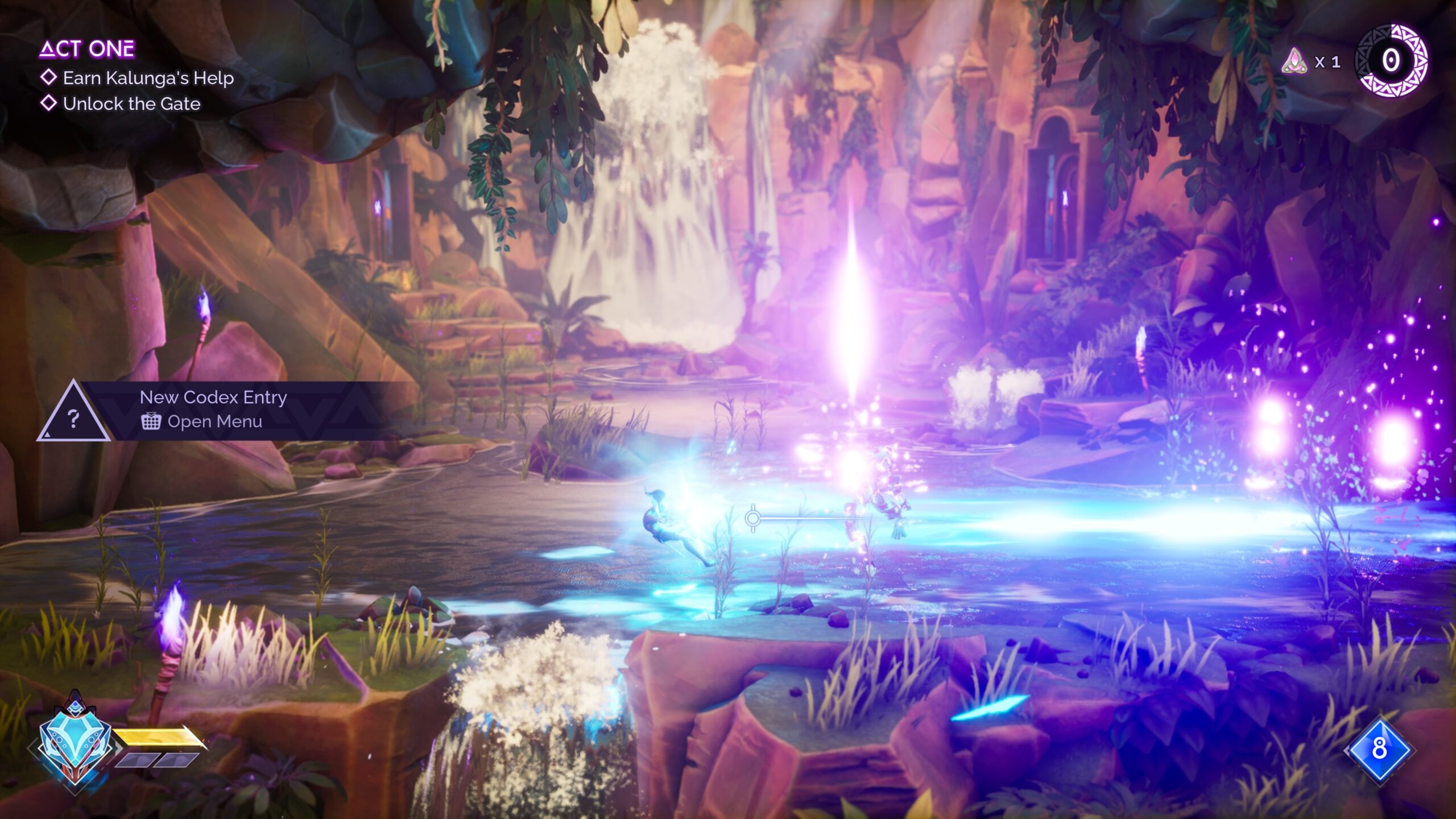
Tales of Kenzera also has terrific particle effects, which produce gorgeous bright and colourful lights that would make Jubilee gasp in awe. I also love the character artwork which accompanies the text on screen, these are beautifully detailed and help convey the emotion of each character. However, I did find it odd that while the character art that accompanies in-game dialogue may showcase the emotional state of a character, the 3D character model will stand emotionless in the background. It’s a slight gripe, but it does create a disconnect between the emotions clearly shown by the character artwork and the character model itself.
TALES OF KENZERA: ZAU REVIEW
Tales of Kenzera: ZAU tells a powerful story of loss, that despite some predictable moments, leaves an impactful and lasting impression. The voice acting throughout the adventure is sublime, with uniquely epic music, and some gorgeous environments. Tales of Kenzera: ZAU does show glimpses of platforming potential, but an inconsistent camera hinders the experience from rivaling the great platformers it is obviously inspired by. Combat also has brief flourishes of excellence, before shielded enemies arrive and cause issues during chaotic battles.
Overall, Tales of Kenzera: ZAU is an experience that required additional time to iron out gameplay issues so it could reach the same fantastic heights of the other elements found within the adventure.
PROS
-
A heartfelt and memorable story
-
Tremendous voice acting performances
-
Uniquely brilliant soundtrack
CONS
-
Inconsistent camera struggles to keep up with face-paced platforming.
-
Coloured enemy shields make it difficult to keep track of combat encounters.





